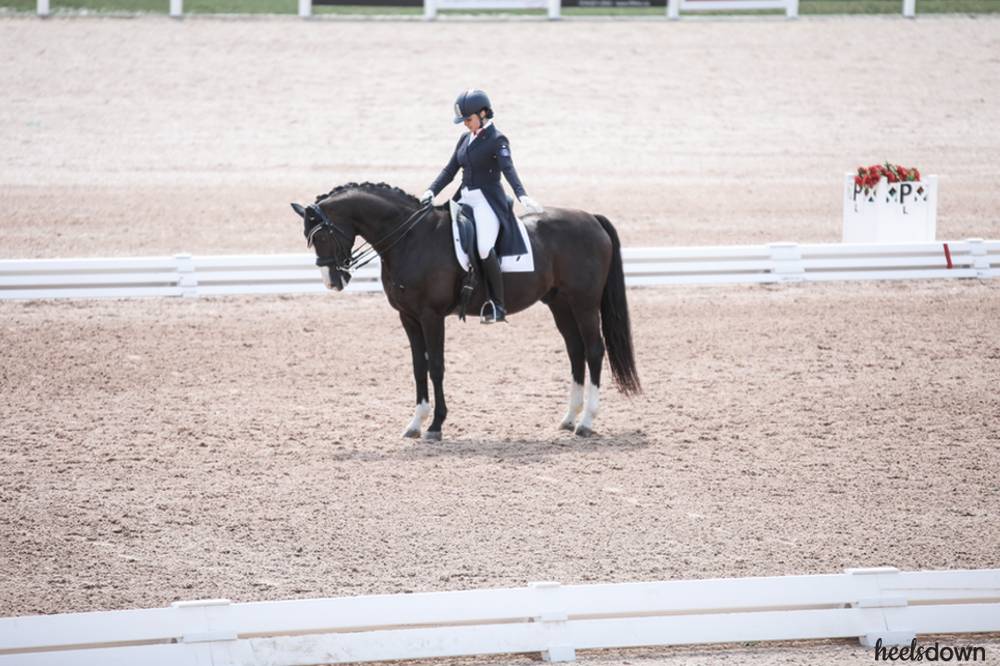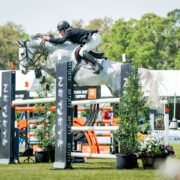10 Steps To Scoring a 10 On The Halt

Halting is a movement that seems easy, but it is not. It’s found in every test from Training Level to Grand Prix, so practice perfect halts without overdoing it and creating anticipation.
Halting Crooked: Many times a rider can place the horse on the centerline, but in the halt the horse’s haunches swing left or right. By setting ground poles on either side of X forming a narrow chute, this will provide a visual for the rider and a physical barrier that the horse will tap his hoof against if not straight.
Nose in the Air: In the halt, the horse should stand round and on the bit. Some will toss their heads or lean against the bit in the halt. This resistance could be a response to the slight increase in pressure as you close your fingers on the reins and ask for the halt. Make sure that you lighten your hands and don’t try to drag him into the halt.
Slack Reins: This is a dressage no no! While you shouldn’t have to hang on tight in the halt to keep the horse from moving off, your reins should never be floppy and slack. Don’t throw them away! This will also be a problem if you expect your horse to stay round in the halt.
Read this next: Sit the Trot Like An Olympian
Halting Square: This will require lots of practice to get the feel for knowing when your horse has left a leg out behind him. A mirrored arena is helpful, but eyes on the ground work too! Tap the offending hind leg with a dressage whip to ask the horse to square up. This will take time to correct, but eventually the horse will know to square up just from a light leg aid.
The Fidgety Horse: For one reason or another, horses can get fidgety or anxious in the halt and will do anything but stand still. With truly hot, nervous horses, it’s important not to over-drill the halt. Be patient and make sure the horse also stands immobile when you mount. You can try offering a sugar cube each time you halt to make the horse anticipate something positive.
Backing Up: Backing a step in the halt is easily corrected. Make sure that you aren’t using the reins too much to be confused with a rein back cue, and keep your leg on lightly.
Like this article? Try: What Makes A Truly Great Dressage Freestyle?
Too Abrupt: It’s very common in transitions from canter to halt for the horse to look like he’s slamming on the brakes. Make a more graceful transition by giving a series of half halts to collect the horse more before asking for a full halt.
Not Prompt: This is more common with transitions from trot to walk, because it’s easy for the horse to sneak in a few walk steps in between. It’s easier to halt from the trot than the canter, so as long as you have a steady connection the horse should be able to respond to your aids with a crisp transition.
Inattentive Departure: This will improve the more in tune your horse becomes to the aids. Make sure your horse understands that leg on means “go!”
Exude Confidence: Don’t rush! A hurried halt makes you appear so nervous that you’re just going through the motions. The judge will definitely notice if you have self control and confidence.


